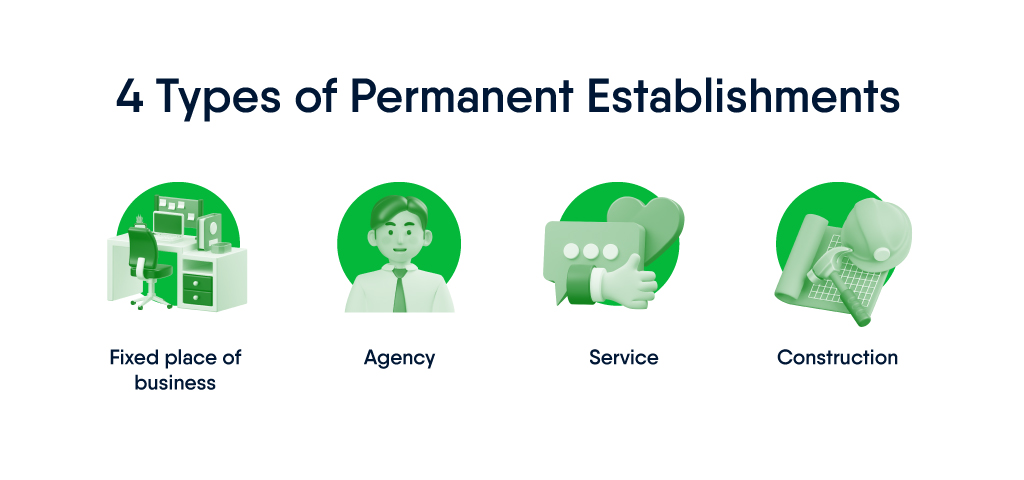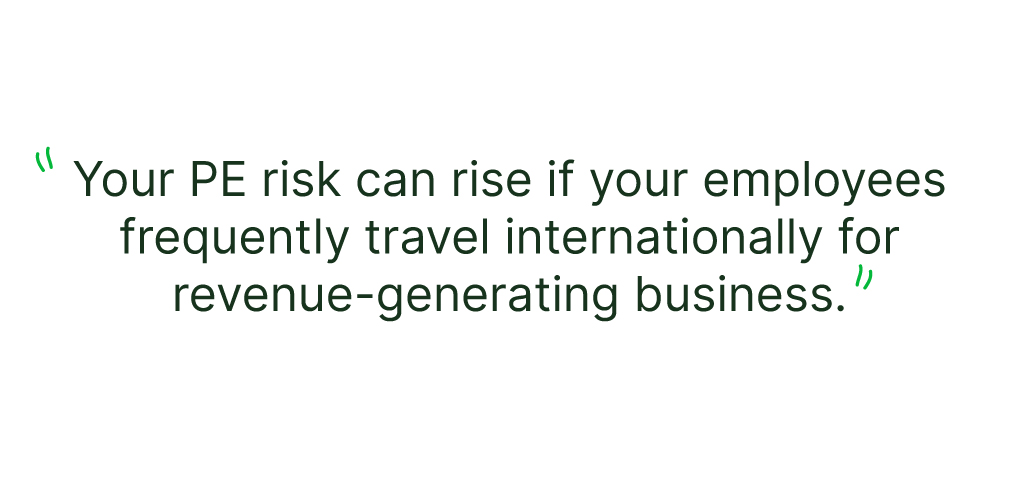Remofirst has just raised $25M in Series A funding! 🎉
Learn More
If your company is considering a global expansion or hiring employees in other countries, you need to understand permanent establishment (PE) risk.
Global tax authorities have increased their scrutiny of foreign businesses operating within their borders in recent years, and not being on top of any potential PE risk can land businesses in serious trouble. Any violations could result in regulatory fines, back taxes, and long-term damage to a company’s international public image.
Successful global businesses are the ones able to tap into international talent and revenue streams without running the risk of permanent establishment in the process.
PE risk refers to the possibility that local authorities in a different country will view your company as a permanent and ongoing enterprise. If that happens, you’ll be liable for corporate taxes in that jurisdiction.
PE scrutiny among international tax authorities is on the rise after the introduction of OECD Action 7, which aims to keep multinational businesses from avoiding taxes. Mishandling your company’s PE risk while operating internationally can lead to a variety of financial problems.
PE fines and penalties can vary depending on the severity of your company’s violations. For example, say you unknowingly triggered PE in Mexico and then kept operating tax-free for six months. That would result in a much higher penalty than if you had realized the error sooner and registered for a local employer ID.
When it comes to what you can expect with PE penalties, one of the main questions tax authorities will use to weigh your case is, “Does it look like they were trying to get away with something?”
Unfortunately, an honest PE mistake can look far more deliberate to international authorities. That’s why you need to be proactive about risk management.
If your organization triggers PE and becomes liable for back income taxes, you’ll also have to pay any interest that accrued as well.
On top of regulatory fines and penalties, tax arrears with interest can pose a major threat to your cash flow. That’s money that you could’ve used for growth initiatives and strategic advancements.
Depending on your company’s financial situation, accidentally triggering PE and corporate taxation could be a major financial setback.
If your company mishandles its PE risk, the authorities’ interest in you won’t just disappear once you pay corporate taxes. They’ll increase the frequency and thoroughness of their audits, using the logic that if your company slipped up once, it could happen again.
It’s worthwhile to get your PE risk squared away from the beginning, as opposed to dealing with heightened scrutiny. Audits are expensive, a logistical headache, and can interfere with your day-to-day operations.
When operating globally or employing individuals internationally, there are four categories of potential risks to be mindful of.
By understanding the different PE classifications, you can enjoy the benefits of doing global business without increasing your legal risks or tax exposure.

International expansion is growing more common among startups and established organizations alike.
However, to avoid financial and legal trouble, multinational expansion must be approached correctly. Failure to understand PE risk can lead to a variety of lasting consequences.
If you’re deemed a PE in another country, you’ll have to pay taxes on revenue generated in that jurisdiction.
Over time, this can significantly decrease your company’s available resources for growth activities.
You might also be liable for back taxes on your earned revenue. The amount of annual revenue that triggers corporate taxation varies worldwide.
If your business is found to be operating as a PE without paying the necessary taxes, you could be hit with hefty fines.
Say your company hired a small overseas sales team on an ongoing basis. You also supplied this team with a physical office from which to conduct business.
Technically, this creates a PE. However, since your company didn’t understand the PE risk, you failed to pay taxes on the revenue you earned. Eventually, local tax authorities assess the situation and award you a sizable penalty.
When expanding internationally, your company’s reputation is an important factor. If you become known for bucking local rules and local tax laws, you’ll find it harder to maintain growth and build lasting business relationships.
Some business decisions are especially likely to raise your PE risk.
A permanent office — this includes co-working spaces and home offices in some areas — could generate an unwanted PE label. You should also steer clear of management hubs, factories, warehouses, and mines.
Any of these will signal to local tax authorities that you’re generating enough revenue to be on their PE radar.
An ongoing physical business location isn’t the only thing that could make you a candidate for a PE classification.
Some other high-risk situations include:
Luckily, there are lower-risk corporate strategies you can pursue.

Hiring part-time contractors for “supporting activities” in lieu of full-time employees is a common way to manage PE risk. This goes back to the idea of core-level work that we talked about earlier.
A marketer could be considered a supporting role for a dental office, for example. The job is part of the business but not central to the core enterprise. A dentist, however, couldn’t qualify as a supporting role because they provide services that are crucial to day-to-day operations.
Other common examples of supporting activities include:
However, the definition of a “supporting activity” will always be subjective. If you run a marketing agency, a marketer or public relations professional won’t qualify for supporting roles, that would be considered a misclassification. The same goes for a lawyer at a law firm.
Do “groundwork-laying” activities such as business introductions trigger PE?
No, activities that set the stage for future business operations but do not actually generate revenue are not considered a PE risk.
How long can a company conduct business internationally before triggering PE?
There’s no universal agreement on this point. It varies from country to country based on their specific tax treaty.
3. If my company has accidentally created a PE, what should we do next?
If you’ve accidentally triggered PE, you should register for a local employer ID and consult with a tax specialist.
One way that multinational companies safeguard themselves from PE risk is to set up a foreign subsidiary. This is a separate legal entity that pays taxes on revenue earned in a given jurisdiction. Meanwhile, the parent company’s corporate revenue in their home country remains untouched.
While this might make sense for larger companies who are hiring many employees, smaller companies are typically better off using an Employer of Record (EOR).
EORs can help with global employment by managing talent on your behalf, with an established local presence across many locations. They offer services and deep expertise in local tax codes and compliance mandates. They essentially act as a proxy employer for your global team.
Working with an EOR won’t necessarily prevent corporate tax liabilities. However, they prevent businesses from unknowingly creating a PE and getting hit with compliance fines and back taxes (plus interest).
An EOR like Remofirst can help your organization with:
By working with an EOR like Remofirst, you can access top talent while minimizing your PE risk.
To learn more, request a demo today and we can discuss your company’s specific needs.